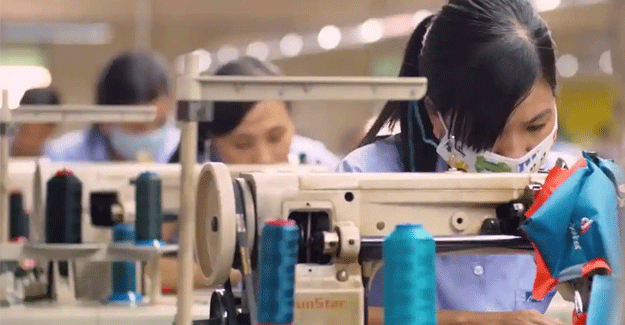
How Garment Brands Can Tackle Excessive Overtime
Till some years ago, the prevailing view in the industry was that Chinese workers wanted to work as many hours as possible. That idea was and still is not correct. One-third of the complaints Fair Wear received from Chinese workers between 2017 and 2019 were about excessive overtime. “At Fair Wear, we realise that overtime is an important tool in any industry for coping with unstable demand. There is no problem as long as it stays within limits defined by the ILO and is voluntary. But that, unfortunately, is often not the case. At Fair Wear, we had growing knowledge on how to tackle this problem. But it was not enough. That is why I initiated this guide,” says Niki Jansen, Coordinator, member learning and innovation at Fair Wear Foundation. Root causes Fair Wear started by taking another close look at the root causes of excessive overtime throughout supply chains. The agency wanted to identify what was happening at suppliers, design and buying departments, and retailers; how were they all contributing to these problems? What kind of solutions proved feasible? What kind of tools existed already? Involving all departments within garment brands “We involved our members quite early in the process. This guide is really the product of a collaboration between Fair Wear and its leader brands. We needed to know what obstacles they ran into and which tools they were already using,” says Niki. These brands already worked actively on reducing excessive working hours. At the same time, it became clear they needed a solid overview of the root causes and the steps they could take. Also, to help them conduct the discussion internally. “After all, the whole company should be involved when you want to tackle a complex problem like this. It’s not limited to CSR. It’s also about purchasing, about design. If you don’t deliver very specific product specifications for example, it could take more time to create a garment. And without properly adjusting the lead time, that can cause excessive overtime. Every department should understand their role in how they influence working hours,” she believes. Brands, suppliers and workers all benefit “To me, this all comes back to thinking logically. It has everything to do with setting up a healthy business. About working closely together with your supply chain partners, making sure you know about each other’s capacity and lead times. That you know exactly by when the vessels need to be reserved, what proper design specifications look like. Eventually it’s a win-win situation. All parties work together on the basic human right to decent working hours and profit from it. Excessive overtime is bad for business. It negatively impacts product quality and productivity. It increases absenteeism, sick leave and worker turn over,” states Niki. The more excessive overtime hours are worked, the higher the chance of accidents in the workplace. It is directly increasing the risk of cardiovascular heart diseases, fatigue, injury, poor sleep quality, short sleep duration and sleep disturbance. Addressing it means a lower risk of sexual harassment, because women don’t have to travel home late anymore. Addressing excessive overtime through purchasing practices This guide provides suppliers with the possibility to discuss working hours with brands. As most root causes lie with brands’ purchasing practices, suppliers will always overbook capacity because it’s easier to find solutions for overbooking (extra hours or subcontracting) than for lack of orders. “But it helps so much to have a minimum order guarantee. A proper go to market plan that you can use for decent production planning involving all supply chain partners is very important too. If you want a garment delivered on a specific date, calculate back when the order needs to be with the material suppliers, so there is enough time for cut-make-trim. Know when the design department needs to give confirmation. And stick to deadlines! Ignoring them greatly contributes to overtime,” she advises. At this time, factories in China are only open for a few days a week due to the energy crisis. That increases the risk of excessive overtime. That is further more reason for garment companies to look at collaborative planning and flexible lead times. Living wages Of course, the work towards reducing excessive working hours goes hand in hand with the work towards higher wages. If you work less hours, at the end of the day you need to have enough money to cover your basic needs. “That is why we recommend to use the labour minute costing calculation, to calculate how much it would cost each year to raise wages to a living wage and thus determine a brand’s share of higher labour costs. To make a reduction in excessive overtime sustainable for workers, brands should simultaneously work towards reaching a living wage in their supply chain.” She concludes, “We encourage all garment brands to walk through this guidance, through all root causes and all supporting tools and check how they can further improve their purchasing practices. Better for people and better for business.”
Textile Excellence
If you wish to Subscribe to Textile Excellence Print Edition, kindly fill in the below form and we shall get back to you with details.








